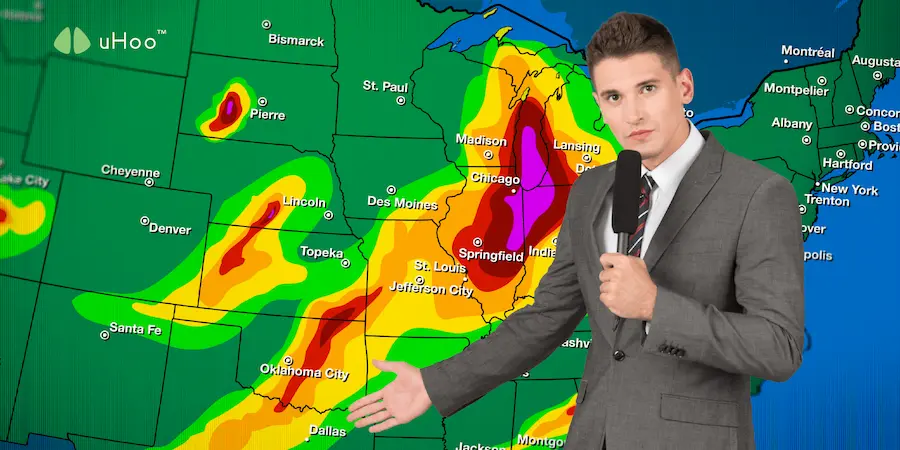Have you ever heard the terms “code red” or ‘code orange” in weather reports? These codes that weather forecasters use refer to the severity of air pollution. Understanding what these codes mean is important because it will help you decide what outdoor activities you can carry out or postpone.
Aside from helping you plan your daily activities, knowing these codes will help you implement the necessary health precautions for family members with respiratory problems and other ailments.
This blog post will discuss the Air Quality Index and its importance in understanding environmental conditions.
AQI Calculation
The Air Quality Index (AQI), created by the U.S. Environmental Protection Agency (EPA), offers a straightforward and consistent method for reporting daily air quality levels. This index is calculated based on hourly readings of five key pollutants:
- Fine particles
- Ground-level ozone
- Sulfur dioxide
- Nitrogen dioxide
- Carbon monoxide
The pollutant with the highest AQI value determines the overall AQI for a given hour. An air quality alert is issued when forecasts predict AQI values nearing or exceeding 101.
Weather conditions significantly influence AQI forecasts, including temperature, precipitation, wind, and cloud cover.
These factors impact the formation of pollutants and their movement from other regions. AQI forecasts are crucial in public health because they help individuals avoid exposure to harmful air pollution.
The Effects of Poor Air Quality on Health
Decades of research have consistently demonstrated that air pollutants like ozone and particulate matter (PM) contribute significantly to the prevalence and severity of lung and heart diseases, among other health issues.
Here are the “Terrible 10” health risks that the American Lung Association published in 2017 associated with breathing polluted air:
Premature Death
Whether short or long-term exposure, unhealthy air can lead to premature death due to the development of various illnesses that can deteriorate over time.
Asthma Attacks
Exposure to ozone and particle pollution can trigger breathing difficulties and asthma attacks, which can result in prolonged hospital admissions and missed work or school days.
Cardiovascular Disease
People who are constantly exposed to polluted air are at risk of heart attack and stroke.
Lung Cancer
The World Health Organization determined in 2013 that particle pollution causes lung cancer.
Developmental Damage
Air pollution can impede lung development in children, affecting their health in the present and reducing lung function in adulthood.
Susceptibility to Infections
Polluted air heightens the risk of lung infections, especially in children.
Worsened COPD Symptoms
Air pollution can exacerbate symptoms for chronic obstructive pulmonary disease (COPD) patients, making it difficult to breathe and potentially leading to hospitalization and death.
Lung Tissue Swelling and Irritation
Air pollution can irritate and swell even healthy lungs. These effects can be particularly harmful for those with asthma and severe lung diseases.
Low Infant Birth Weight
A number of studies start that being exposed to air pollution can possibly increase the risk of low birth weight and infant mortality.
Difficulty in Breathing and Other Symptoms of Respiratory Illness
These symptoms can result from long-term and short-term exposure to high air pollutants.
The Different AQI Levels
Weather forecasters use the Air Quality Index (AQI) to report daily air quality levels. It indicates how clean or polluted the air is and highlights potential health effects, especially ground-level ozone and particulate matter.
Higher AQI values indicate greater air pollution and increased health risks. For instance, an AQI of 50 signifies good air quality with minimal health risks, while an AQI of over 300 denotes hazardous conditions.
An AQI of 100 aligns with the EPA air quality standard. Values below 100 are generally satisfactory. However, when AQI values exceed 100, air quality becomes unhealthy, initially for sensitive groups and eventually for everyone as the values rise.
| Values | Levels of Health Concern | Color |
| 0-50 | Good | Green |
| 51-100 | Moderate | Yellow |
| 101-150 | Unhealthy for Sensitive Groups | Orange |
| 151-200 | Unhealthy | Red |
| 201-300 | Very Unhealthy | Purple |
| 301-500 | Hazardous | Maroon |
How to Monitor AQI
Mobile App for Air Quality Monitoring
Imagine holding your smartphone and seeing live AQI details on the screen. You can easily download an AQI app from your app store if you need a portable air quality checker. These apps provide real-time data on air quality, helping you stay informed about the air you breathe wherever you are.
Indoor Air Quality Checker Devices
Indoor air quality monitoring devices display average results with graphs, making them ideal for environments like hospitals, corporate offices, and luxury hotels. Industries such as power plants or research laboratories that handle sensitive and highly reactive chemicals require serious indoor air quality monitoring, and these devices are ideally suited for such needs.
AQI App for Digital Signage
Another type of air quality checker is a software application that shows real-time AQI data on digital screens for mass visibility. An AQI app can pull data from reliable sources and display it on your screen.
Key Takeaway
Monitoring and understanding the Air Quality Index (AQI) is essential for maintaining health and well-being. You can carefully plan your outdoor routines or events and take necessary precautions to protect sensitive family members or friends, especially those with respiratory issues. With various tools available, from mobile apps to indoor air quality devices and digital signage, staying updated on air quality has never been easier. Incorporate AQI monitoring into your daily routine to ensure a healthier environment for yourself and your community.

